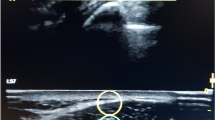Abstract
Rheumatic patients experience persistent and disabling pain. We aimed to investigate the pain pressure threshold (PPT) values in ankylosing spondylitis (AS) patients compared to rheumatoid arthritis (RA) patients and healthy subjects. The relationship between lumbar and thoracal Schober, chin-to-chest distance, occiput-to-wall distance, finger-to-floor distance, chest expansion, and pain scores were also evaluated in an AS group. Our study group consisted of 17 AS patients, 20 RA patients, and 21 healthy volunteers. Eighteen tender points accepted by the American College of Rheumatism (ACR) for fibromyalgia syndrome evaluation in 1990 and three control points were evaluated with Fischer's tissue compliance meter, which can also be used as an algometer. Fourteen paravertebral points were evaluated, and mean values of paravertebral myalgic scores were recorded in the AS group. Our data indicate that AS patients do not have lower PPT with respect to healthy individuals, whereas RA patients have significantly lower PPT. A significant correlation was obtained between finger-to-floor distance and paravertebral myalgic score for AS. We conclude that AS does not have a widespread pain nature as RA.
Similar content being viewed by others
Author information
Authors and Affiliations
Additional information
Electronic Publication
Rights and permissions
About this article
Cite this article
Incel, N., Erdem, R.H., Ozgocmen, S. et al. Pain pressure threshold values in ankylosing spondylitis. Rheumatol Int 22, 148–150 (2002). https://doi.org/10.1007/s00296-002-0211-1
Received:
Accepted:
Published:
Issue Date:
DOI: https://doi.org/10.1007/s00296-002-0211-1




